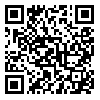Volume 16, Issue 1 (1-2017)
ijdld 2017, 16(1): 17-38 |
Back to browse issues page
Download citation:
BibTeX | RIS | EndNote | Medlars | ProCite | Reference Manager | RefWorks
Send citation to:



BibTeX | RIS | EndNote | Medlars | ProCite | Reference Manager | RefWorks
Send citation to:
Fiuzy M, Haddania J, Mollania N. PREDICTION AND DETERMINATION OF THE CORRECT DOSE OF INSULIN IN DIABETIC PATIENTS BASED ON DIABETES FUZZY DIAGNOSIS. ijdld 2017; 16 (1) :17-38
URL: http://ijdld.tums.ac.ir/article-1-5476-en.html
URL: http://ijdld.tums.ac.ir/article-1-5476-en.html
1- Elderology Research Center, Sabzevar University of Medical Sciences, Sabzevar, Iran , mohammad.fiuzy@yahoo.com
2- Biomedical Engineering division, Electrical Engineering Faculty, Hakim Sabzevari University, Sabzevar, Iran
3- Biochemistry division, Basic Science Faculty, Hakim Sabzevari University, Sabzevar, Iran
2- Biomedical Engineering division, Electrical Engineering Faculty, Hakim Sabzevari University, Sabzevar, Iran
3- Biochemistry division, Basic Science Faculty, Hakim Sabzevari University, Sabzevar, Iran
Abstract: (4615 Views)
Background: On time diabetes diagnosis dramatically reduces the many injuries and damage in the community. Diabetes is a disease that requires a lot of care in addition to prevention, such as prediction the correct level of blood sugar fluctuations. The most important complications of such disease are anesthesia, coma and even death at final. Today, in these patients, determining the correct dose of insulin is based on the experience and knowledge of physicians along with the interaction of patients with them, although human error is inevitable.
Methods: This study includes 124 patients and 188 healthy suspects were examined based on 21 features which hold by 7 features for diagnosis and 14 features for predicting insulin dose. The proposed system was presented to identify or diagnose the disease at first, and finally the correct doses of insulin for patients have been determine. The proposed system has two stages (which include diagnosis and prediction) and several subsystems. In the diagnosis phase, some sub systems such as the Fuzzy system for the purpose of accurately estimating the disease progression in patients and the decision tree (DT) for the preparation of rules in the fuzzy system (the process of mapping the attribute space (individuals) to the output (the diagnostic result)) have used. Also, in the prediction phase of insulin dose, the BPSO algorithms are used to select the best features. Classification algorithms (SVMs) are used to categorize effective to non-effective and adaptive artificial neuropsychological (ANFIS) systems for ultimate patient prediction have used.
Results: The proposed system, based on the best features in the provided data base in the form of the combination and interaction, succeeded to achieve a 95.1% precision, of course due to comparing by other commonly used methods and its performance the proposed method have high precision.
Conclusion: The results were significantly improved compared to previous studies. Also, in comparison with the results of physicians, it is indicative of good performance in predicting the accuracy of the time series of glucose concentration because the proposed system succeeded in predicting blood sugar levels for up to 48 hours.
Methods: This study includes 124 patients and 188 healthy suspects were examined based on 21 features which hold by 7 features for diagnosis and 14 features for predicting insulin dose. The proposed system was presented to identify or diagnose the disease at first, and finally the correct doses of insulin for patients have been determine. The proposed system has two stages (which include diagnosis and prediction) and several subsystems. In the diagnosis phase, some sub systems such as the Fuzzy system for the purpose of accurately estimating the disease progression in patients and the decision tree (DT) for the preparation of rules in the fuzzy system (the process of mapping the attribute space (individuals) to the output (the diagnostic result)) have used. Also, in the prediction phase of insulin dose, the BPSO algorithms are used to select the best features. Classification algorithms (SVMs) are used to categorize effective to non-effective and adaptive artificial neuropsychological (ANFIS) systems for ultimate patient prediction have used.
Results: The proposed system, based on the best features in the provided data base in the form of the combination and interaction, succeeded to achieve a 95.1% precision, of course due to comparing by other commonly used methods and its performance the proposed method have high precision.
Conclusion: The results were significantly improved compared to previous studies. Also, in comparison with the results of physicians, it is indicative of good performance in predicting the accuracy of the time series of glucose concentration because the proposed system succeeded in predicting blood sugar levels for up to 48 hours.
Keywords: Diabetes, Diagnosis, Prediction, Fuzzy Systems, Classification Algorithm, Adaptive Neuro Fuzzy Inference System
Type of Study: Applicable |
Subject:
Special
Received: 2016/01/19 | Accepted: 2016/05/11 | Published: 2017/09/12
Received: 2016/01/19 | Accepted: 2016/05/11 | Published: 2017/09/12
Send email to the article author
| Rights and permissions | |
 |
This work is licensed under a Creative Commons Attribution-NonCommercial 4.0 International License. |





